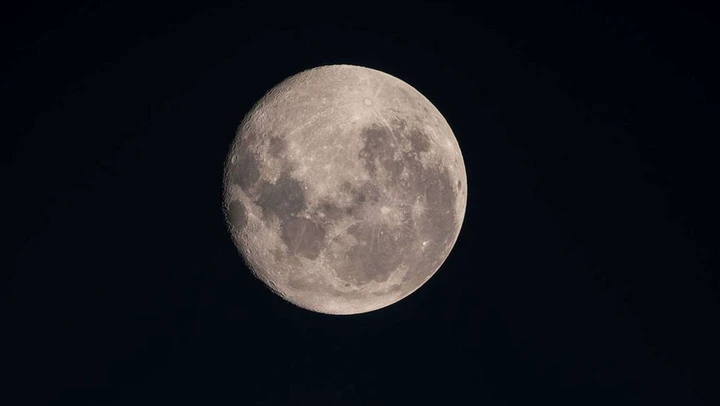The initial Full Moon of 2025 will rise higher and last longer than usual, and it will briefly obscure Mars.

View pictures in App save up to 80% data.
In the Northern Hemisphere, we’re in the dead of winter and most people are spending their evenings inside where it’s warm. You might want to bundle up and head outside soon, though, to get a look at January’s Wolf Moon and the occultation of Mars.
The full Moon happens roughly once every month (sometimes it happens twice in a month, something known as a Blue Moon), and each has its own name. In the United States the January full Moon is known as the Wolf Moon. It’s said that the name comes from the wolves which historically howled at night during this time of year. In other places and among other cultures, it has other names including the Ice Moon, Old Moon, Center Moon, Cold Moon, and many more.
In fiction, the full Moon is a time for weirdness and wonder, a time when werewolves emerge to hunt their prey. Later this month, a reimagined Wolf Man will stalk into theaters from director Leigh Whannell (The Invisible Man). After moving from San Francisco to Oregon, Blake (Christopher Abbott) and his family are attacked by a werewolf. They escape with their lives and board themselves inside the house, but Blake was scratched and he’s beginning to change. Wolf Man hits theaters January 17, but in the meantime, we have a real-world Wolf Moon of our own to check out.
When a full Moon occurs, the Moon is positioned directly opposite the Sun in relation to the Earth, resulting in its entire surface being illuminated as seen from our perspective. This alignment is why lunar eclipses can only take place during a full Moon, as it is the only time the Earth can interpose itself between the Moon and the Sun. At other times, the Moon receives light from different angles in relation to the Earth, which creates its distinctive phases, ranging from full Moon to new Moon and all the variations in between.

View pictures in App save up to 80% data.
When is the occurrence of the January Wolf Moon?
The Moon is set to reach its full phase on the evening of Monday, January 13, at 5:27 PM ET. However, it will look full for approximately three days, starting from Sunday evening and lasting through Wednesday morning. This January's Wolf Moon will also be the highest Full Moon of the year in the Northern Hemisphere. This phenomenon occurs because the Sun and the Moon are positioned nearly on the same plane in space. Due to the tilt of the Earth, the Sun is at its lowest point while the Moon is at its peak during the Winter Solstice, which recently occurred on December 21, 2024.
This full Moon will take a longer route across the sky, making it visible for an extended period. Expect to see the Moon rise in the east roughly when the Sun is setting in the west. Similarly, it will set in the west just as the Sun is rising the following morning.
The January Full Moon offers a splendid opportunity to observe Mars and various other celestial phenomena.

View pictures in App save up to 80% data.
Everything in space is in motion. From our point of view, the Moon’s motion is the result of moving along its orbital path and the rotation of the Earth. At the same time, the background planets of our solar system are also in motion, and sometimes they cross paths. On the evening of January 13, the Moon will pass in front of Mars.
When the Moon passes in front of another object from our point of view, it’s called an occultation. It’s less impressive than the mid-day darkness and coronal views of a solar eclipse but it’s still a neat way to spend an evening outside. The Moon will cover Mars for about an hour and 15 minutes that evening. The precise timing of the occultation will vary depending on your position on the globe. You can use tools like Stellarium Web to figure out the best viewing times for your location.
When you're outdoors, take a second to admire the entire sky. Even though Mars may briefly vanish from view, Venus and Saturn will grace the western sky during the early evening hours. Jupiter will be prominent for much of the night, and you can observe all of these planets in finer detail with a small telescope or a pair of binoculars.









